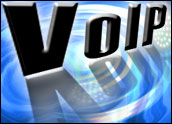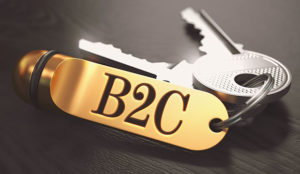
Have you noticed the “dial ‘O’ for a human” movement gathering steam? One related manifestation is the clever set of ads put out by Citibank for its credit cards. You may have seen the ads showing a man calling for service and navigating through the tragedy that is the automated call response system so many companies use.
One of the ads shows the guy getting up in the morning and calling his bank’s credit card service line. The character is reluctant to disengage from the automated system once he starts for fear that he’ll have to start over. The ad progresses, showing him getting dressed for work and waiting for and riding the train. In between we are treated to all the marvels of modern voice response technology as the system prompts him to say “yes” or “no” or enter a simple bit of data. I particularly like it when this meek guy is in a public place and is asked for his password and has to respond “big boy.” We’ve all been there. If not, it’s one of our top ten nightmares, so we can relate.
The kicker is that when he finally reaches a live agent he’s riding the train to work and the train plunges into a tunnel, wiping out the wireless connection and all the effort to that point.
Breaking Through to a Human
There may be a solution to this hapless consumer’s plight and it says a lot about us, what we’re willing to put up with, and perhaps an important future direction of CRM. A software engineer, Paul English, who lives near Boston, has come up with a clever alternative to customer-service-by-phone hell. English is the originator of “dial ‘O’ for a human” and his solution is quite simply to develop cheat sheets for navigating major corporations’ phone systems.
Since the phone systems can take input as fast as you can provide it, there’s no need to wade through audio menus to make the right selections. If you want to speak with someone about a problem that the computerized system won’t be able to help with, simply use the cheat sheet to enter “*” a few times or a sequence like 4,5,2,9 or something similar and presto, you’ve broken through. If you’d like to know more about this whole thing or if you’d like to contribute a sequence to the growing list of companies whose codes have been cracked, check out www.paulenglish.com. I hear there are more than 200 entries on the cheat sheet already and there’s a new edition focused just on the UK.
What’s interesting to me about all this is the CRM angle. Clearly the ads are ridiculing CRM and English is rigging a work-around that, in a prior generation, would have resonated with Rube Goldberg fans. What I think is being said in these examples is that CRM isn’t working for the people it is intended to work for — the customers. It also exposes some ugly truths that, too often, CRM is about saving money, not engaging customers and, sadly, that the pre-eminent product attribute we look for is low cost rather than total cost of ownership. (For example, we still buy SUVs at steep discounts because we don’t factor in the rising cost of gas.)
The Automation Threshold
But much more than that, if you take a long view, the general public has been through decades of cost-cutting through automation and we may be reaching the practical limits of what automation can do and how much of it we are willing to take. In this, there is opportunity. Automation reduces the labor component in products and especially services and thus enables everyone to take cost out. That’s no surprise, and it makes sense to a point. Why, after all, should a product’s price reflect the cost of support if you personally never access that service? Shouldn’t a non-service user be rewarded for being clever or insightful or just plain lucky enough not to require service?
The opportunity I see is in charging for service. I don’t think we do that enough. I have super-duper, gold technical service contracts on all my computers (and I am too embarrassed to tell you how many that is). I bought the contracts upfront with the computers because when I want to know, I really want to know, end of story. Are they making money on me? I sure hope so, because I want it to be worth their while so they’ll speedily take my call when I croak my operating system.
Want to speak with someone? You can wait in line or you can pay a small fee. It’s your time and money — you decide. If we did more of this I think we’d discover that people make pretty good decisions about the trade-offs on a personal level and we’d see that paying the premium makes good sense sometimes. If people feel they’re getting good value for the fees they pay we might see satisfaction and loyalty graphs climb out of the cellars some are in right now. It’s also a very satisfying idea for enterprise call center managers and executives trying to generate revenue. Maybe it’s naive, but I think if people are willing to turn to a cheat sheet, there are probably even more who are willing to simply pay for service.
This story was originally published on Jan. 25, 2006, and is brought to you today as part of our Best of ECT News series.
Denis Pombriant is a well known thought leader in CRM and the founder and managing principal of the Beagle Research Group, a CRM market research firm and consultancy. Pombriant’s latest white paper, Adding Sales to the Call Center Agenda, summarizes his recent research in the call center industry. In 2003, CRM Magazine named Pombriant one of the most influential executives in the CRM industry. Pombriant is currently working on a book to be published next year. He can be reached at [email protected]
























































